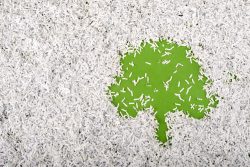A look into how confidential shredding works in practice…

Why is it important to talk about the “how”?
In our last article, we explained what confidential shredding is and why businesses and organisations should be doing it. But that’s not the end of the story. It’s also important to talk about how to shred and, more importantly, how to shred effectively. Having any old process in place just isn’t enough; it’s essential you have a shredding process in place that keeps your data secure every step of its journey – a journey that starts from the moment you create the data to the moment it gets destroyed. Current legal regulations require you to destroy this data in a certain way, so it’s absolutely essential you use a supplier with the right accreditations, who can provide a secure, compliant service and a Certificate of Destruction upon completion. In-house shredding may seem like an easy option, but is rarely effective enough to keep your business compliant. For us, shredding is also another opportunity to be eco-friendly. By recycling your shredded materials once they’re no longer recognisable, we are choosing a sustainable route that helps protect the environment, as well as your data.
As a business or organisation, it’s in your best interest, and important legally, to know exactly how your confidential materials are being shredded. By knowing this, you can ensure you’re doing everything possible to look after your data securely and sustainably. To give you an idea of how a secure and sustainable shredding process works in practice, we’ve outlined a typical data destruction journey below…
Step 1: Keeping your data secure prior to destruction
Firstly, it goes without saying that it’s absolutely vital you have a secure and compliant process in place from the very start of your data’s journey to the end, and, as a business, you must apply by the GDPR guidelines on this. Check out some of our previous blogs on how to look after data when still in use here.
Once your confidential materials are ready to be destroyed, to protect your data, they will need to be kept in a secure place before being collected. At Printwaste, we do this by providing our customers with a range of containers, lockable consoles, bags and secure bins to place around their workplace, dependent on each business or organisation’s needs. Only one approved person on site is assigned the dedicated key to open these storage containers, and our team will advise on the best position for the containers to ensure maximum usage. This is usually somewhere that is both easily accessible to employees and near to where most of the confidential waste is generated (e.g. by the printer).
Step 2: On-site or off-site shredding?
With your data safely stored in a secure container, it’s now ready to be collected and shredded. But should you have your materials shredded on-site or off-site? At Printwaste, we offer both options, neither better than the other, simply to provide our customers with flexibility and choice, dependent on their requirements. With on-site shredding, we’ll securely destroy your confidential materials on your own premises, via our mobile shredding vehicles. With off-site, we’ll safely transport your confidential materials to our high-security shredding facility, which is monitored by 24-hour CCTV, and destroy them there. With both options, you’ll have the guarantee that your data is being looked after by a security-vetted and highly accredited team, and you’ll receive a Certificate of Destruction as soon as your items have been destroyed.
Step 3: What actually happens when your materials get shredded?
Now you’ve chosen where to shred your materials, let’s talk about how the process actually works. Take paper as an example. On-site or off-site, we’ll start by shredding your confidential documents quickly and efficiently to the legal standards. Then, we’ll transport the shredded paper to our carefully chosen mills, where it’ll be de-inked, pulped and cleaned, before being pumped into a machine to form a sheet. After this, the sheet of paper will be pressed to remove any leftover water and put through a series of heated rollers to achieve the right moisture content and thickness. And, lastly, the paper will be wound and cut into rolls, ready to be turned back into office paper and other paper-related products (such as books and newspapers). Depending on what type of confidential data you have, this process will differ slightly – but, whatever the material, we’ll always destroy it securely, and with the environment in mind.
So, after reading this, the big question is, how much is your data protection worth to you? For us, the answer is easy. Choosing the right supplier with the appropriate accreditations is an invaluable investment worth making.
